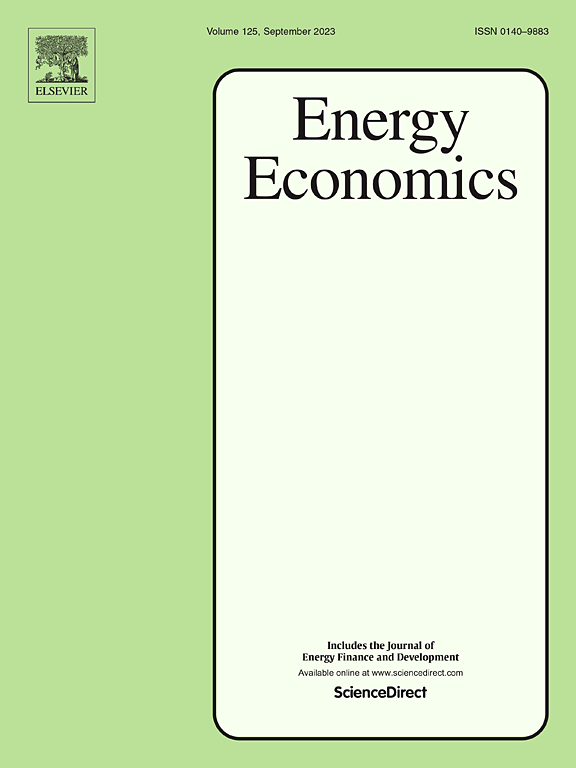Tariffs time-dynamics in competitive electricity retail markets with differentiated consumer reactions
IF 13.6
2区 经济学
Q1 ECONOMICS
引用次数: 0
Abstract
Time-varying retail tariffs play a key role in activating demand-side flexibility in power systems. In retail markets, such tariffs compete with constant-in-time, or flat, tariffs. We investigate how the coexistence of these two tariff types influences their respective pricing levels and adoption rates among a diverse consumer base. To this end, we propose a multi-leader–followers model featuring a continuum of consumers characterized by their penalization of responding to price changes at the lower level and two competing retailers at the upper level. One retailer offers a time-varying tariff and the other a flat one. We derive the equilibria of the retail market under various assumptions about each retailer’s responsiveness to the other’s decisions, and compare the outcomes with those under a regulated monopolist retailer. We then provide a numerical application of the results based on the French electricity retail market.
At equilibrium, the time-varying tariff’s dynamics is dampened relative to the first-best real-time price due to competitive pressure from the flat tariff and the distribution of consumers. When the time-varying tariff is known ex-ante, competition leads to lower or more uncertain adoption of the time-varying tariff compared to a monopolistic retailer offering both tariffs. When it is not, the monopolistic retailer option seems less attractive in terms of mobilized demand-side flexibility than retail competition, notably if consumers overestimate electricity prices on average. In that case, less flexible consumers bear the cost of imperfectly forecasting the tariff levels.
具有差异化消费者反应的竞争性电力零售市场的电价时间动态
时变零售电价在激活电力系统的需求侧灵活性方面发挥着关键作用。在零售市场,这种关税与固定时间或固定关税竞争。我们研究了这两种关税类型的共存如何影响它们各自的定价水平和在不同消费者群体中的采用率。为此,我们提出了一个多领导者-追随者模型,该模型具有连续的消费者特征,其特征是对较低水平的价格变化做出反应,而在较高水平上有两个竞争的零售商。一家零售商提供时变关税,另一家提供固定关税。我们在不同的假设下推导了零售市场的均衡,每个零售商对其他零售商的决策的响应,并将结果与受监管的垄断零售商的结果进行了比较。然后,我们提供了一个基于法国电力零售市场的数值应用结果。
本文章由计算机程序翻译,如有差异,请以英文原文为准。
求助全文
约1分钟内获得全文
求助全文
来源期刊

Energy Economics
ECONOMICS-
CiteScore
18.60
自引率
12.50%
发文量
524
期刊介绍:
Energy Economics is a field journal that focuses on energy economics and energy finance. It covers various themes including the exploitation, conversion, and use of energy, markets for energy commodities and derivatives, regulation and taxation, forecasting, environment and climate, international trade, development, and monetary policy. The journal welcomes contributions that utilize diverse methods such as experiments, surveys, econometrics, decomposition, simulation models, equilibrium models, optimization models, and analytical models. It publishes a combination of papers employing different methods to explore a wide range of topics. The journal's replication policy encourages the submission of replication studies, wherein researchers reproduce and extend the key results of original studies while explaining any differences. Energy Economics is indexed and abstracted in several databases including Environmental Abstracts, Fuel and Energy Abstracts, Social Sciences Citation Index, GEOBASE, Social & Behavioral Sciences, Journal of Economic Literature, INSPEC, and more.
 求助内容:
求助内容: 应助结果提醒方式:
应助结果提醒方式:


